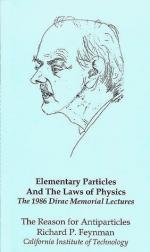|
This section contains 751 words (approx. 3 pages at 300 words per page) |

|
One of the seminal scientific discoveries of the twentieth century was Louis Victor de Broglie's theory of the wave nature of the electron. By integrating theories by Albert Einstein dealing with mass and energy and Max Planck's Quantum relationship between energy and wavelength, de Broglie posited that any material particle should also exhibit wave like properties, just as Einstein earlier had shown that light, which had been described as a wave phenomenon, also exhibited particle like behavior.
Building on de Broglie's theory, Erwin Schrödinger developed his famous wave equation for both free electrons and those bound to atoms. A limitation of Schrodinger's equation was that it did not include relativity. In the late 1920s, the English physicist Paul Adrien Maurice Dirac extended Schrodinger's theory by incorporating relativity into the wave equation for the electron. He showed that particles, such as. the electron should always exist in...
|
This section contains 751 words (approx. 3 pages at 300 words per page) |

|


